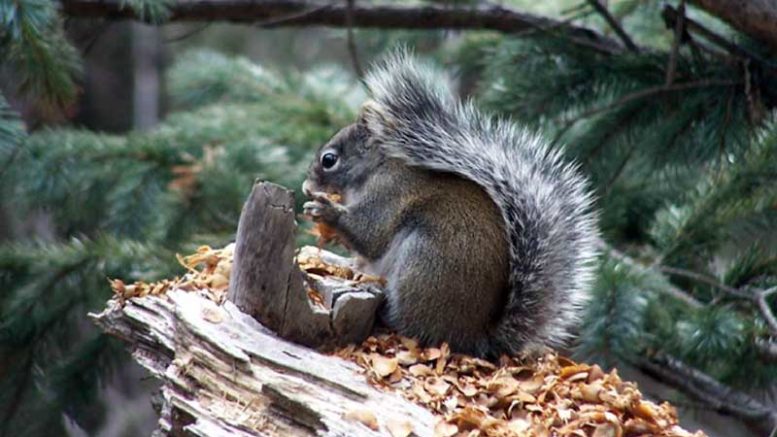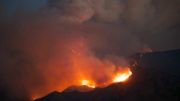By Jon Johnson
MOUNT GRAHAM – The lightning-caused Frye Fire burned 48,443 acres on Mount Graham this past summer and with it a significant portion of the habitat for the endangered Mt. Graham red squirrel.
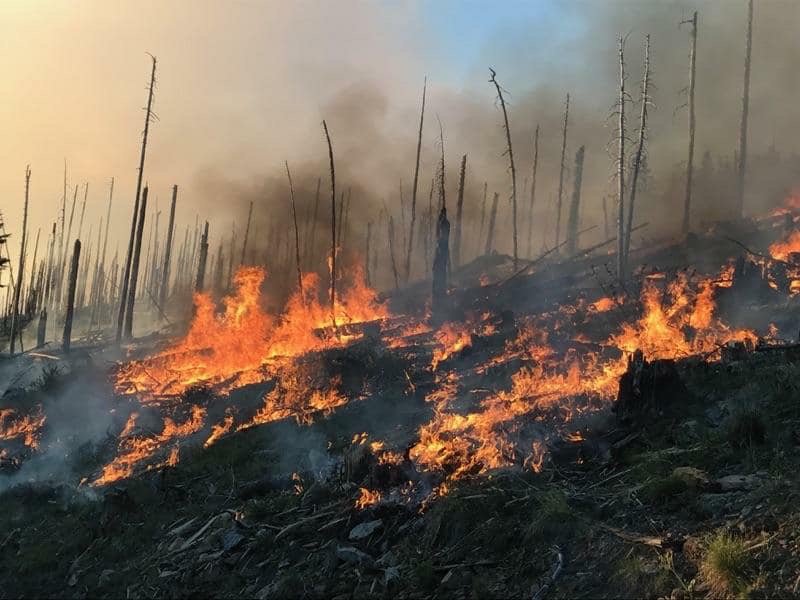
Contributed Photo/Courtesy Fry Fire District: The Frye Fire burned more than 48,000 acres on Mount Graham, including a large swath of habitat for the Mt. Graham red squirrel.
After rebounding from lowered numbers after the 2004 Nuttall-Gibson Complex Fire, a recent squirrel midden count showed the species on the mountain has dwindled from 252 in 2016 to just 35 squirrels left on the mountain. Biologists perform a midden count twice every year to estimate how many squirrels are left. The biologists count the middens and look for evidence of squirrel activity in lieu of actually attempting to locate the squirrels themselves.
The Arizona Game & Fish Department rescued nearly 200 Gila trout from the Frye and Ash creeks after the fire and transported them to the Mora National Fish Hatchery, where more fish are being bred. However, for the Mt. Graham red squirrel, there are just five squirrels in captivity (three males and two females) that were taken to the Phoenix Zoo.
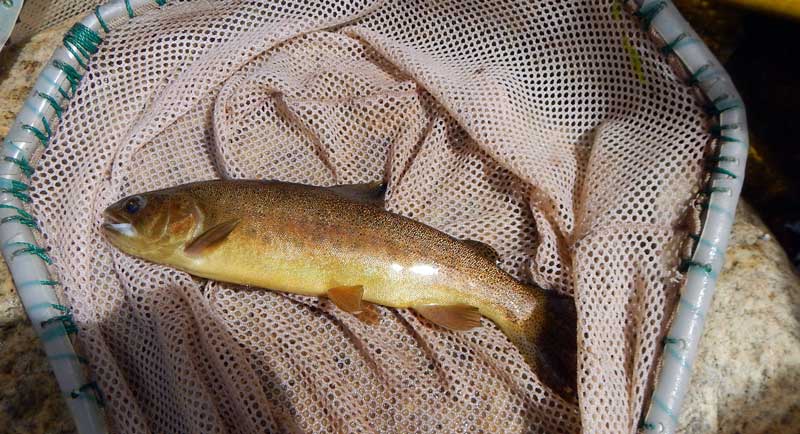
Contributed Photo/Courtesy AZGF: Nearly 200 Gila trout were rescued from Frye and Ash creeks.
While fire activity was present in 95 percent of the surveyed locations and 80 percent showing habitat loss, the squirrels might have also fled the fire and relocated to other areas outside of the normal habitat area.
The count was part of a joint survey conducted in September by the U.S. Fish & Wildlife Service, Arizona Game and Fish Department, Coronado National Forest, University of Arizona and the Arizona Center for Nature Conservation.
The Mt. Graham red squirrel is one of 25 subspecies of red squirrels throughout North America and is only located in the Pinaleño Mountain Range in both the spruce-fir and mixed-conifer habitats from 7,800 feet to 10,720 feet. The species was thought to be extinct but were rediscovered in the 1970s and was added to the federal endangered species list in 1987 by the U.S. Fish and Wildlife Service when the estimated population in 1986 was less than 400.
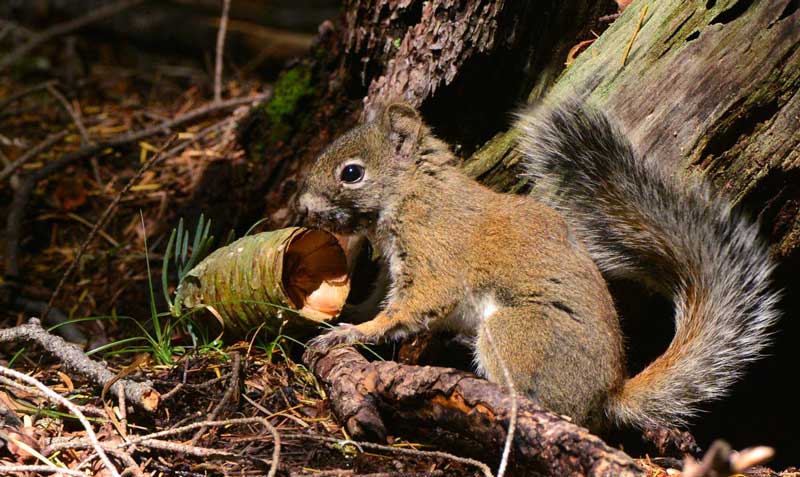
Photo By George Andrejko/Courtesy Arizona Game and Fish Department: The Mt. Graham red squirrels could be on the verge of extinction.
In addition to natural disasters, the Mt. Graham red squirrel also has to deal with competition from the non-native Abert’s squirrel (which was imported by the Arizona Game and Fish Department) and is a food source for the threatened Mexican spotted owl. Local columnist Dexter K. Oliver once recalled that both he and a colleague had witnessed a Mexican spotted owl with a Mt. Graham red squirrel clutched in its talons while working as Mount Graham red squirrel monitors in 1989 prior to the road being constructed to build access to the yet-to-be-built Mt. Graham International Observatory (MGIO).
Environmentalists sought to keep the University of Arizona from building the MGIO, which includes three separate telescopes on eight acres, and a road to access the facility.
Construction of the facility began in 1989, however, and the squirrel’s numbers actually increased to a high of 549 in the fall of 1998. However, after a two-year period in which more than 16,000 trees in more than 2,000 acres of the squirrel’s habitat died from insect infestation, the squirrel’s numbers fell to just 247 in the fall 2001 count.
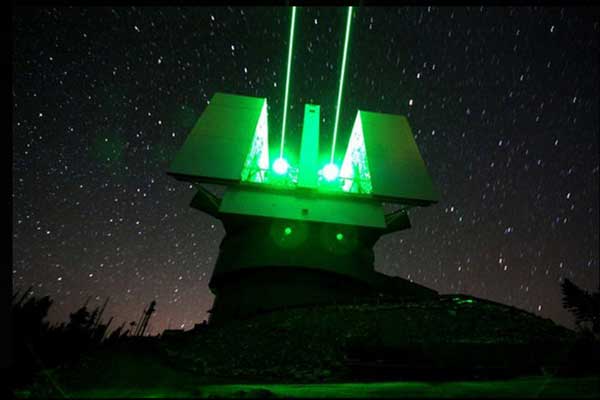
Contributed Photo/Courtesy Hunter Windsor: The telescopes at the MGIO escaped fire damage.
Dr. Robin Silver of the Center for Biological Diversity in Tucson has previously blamed lowered squirrel numbers on the construction of the Mt. Graham International Observatory on eight acres of squirrel habitat and for fire suppression activities aimed at protecting the cabins at Columbine. In 2001, Silver called for the complete removal of the MGIO.
After the recent squirrel count was made, Silver again has called for the relocation of the MGIO and now is suggesting the removal of cabins at Columbine and the Bible Camp.
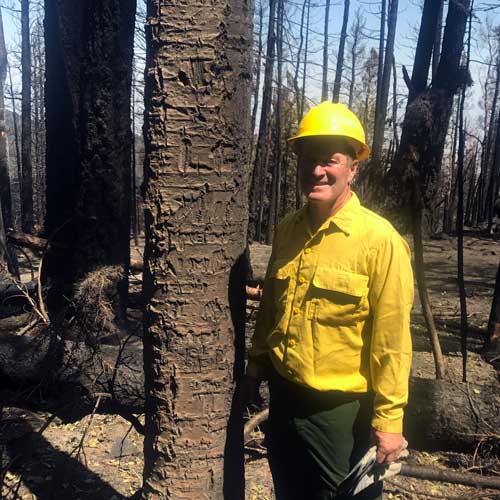
Contributed Photo/Courtesy Daryl Weech: Daryl Weech inspects the Kimball Tree on June 27. Weech says the loss of squirrel habitat was due to mismanagement of the forest, not human interaction.
Columbine Cabin Owners Association President Daryl Weech took exception to that suggestion and said the cabin owners had been living in harmony with the squirrels for years until the fire took them out.
“We have not been a detriment to them at all,” Weech said. “In fact, they like people . . . They are basically rodents and they like to be around people and get any kind of food they can get from people.”
Weech suggested that it wasn’t their presence that endangered the squirrel but the mismanagement of the forest.
“The forest was clean 70 to 80 years ago because the forest fires burned it and kept it clean,” Weech said. “When they discovered this squirrel, they found it in a trashy environment, which the squirrel had adapted to. We have been advocating for them to clean the mountain up and see if the squirrel can adapt back to a clean environment. Because of them keeping the forest trashy, the forest burned and we lost a lot more habitat then we would have lost had the forest been managed properly . . . If they had manually gone in and cleaned up the forest as much as we could get, we wouldn’t have lost as many acres. It would have burned lightly underneath and the trees would have still been producing cones and the squirrels would have been fat and happy.”
Weech went on to say that managing the forest for just a singular species creates a detriment to all the other species in the forest and is not feasible.
In addition to any new action to help the Mt. Graham red squirrel, ecosystem restoration activities are scheduled to occur seasonally in the fall and winter for the next seven years for the Pinaleno Ecosystem Restoration Project. The project offers various alternatives to restore the fire- and insect-decimated forest with the main reason being to help with the survival of the Mt. Graham red squirrel and Mexican spotted owl.

